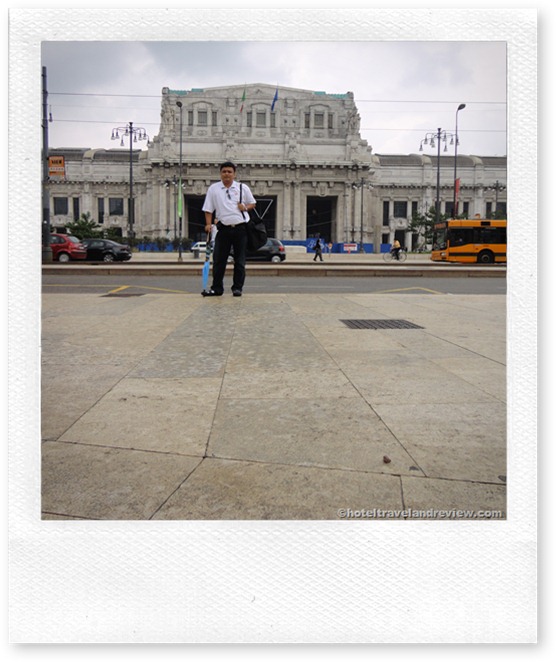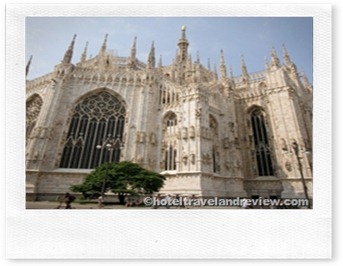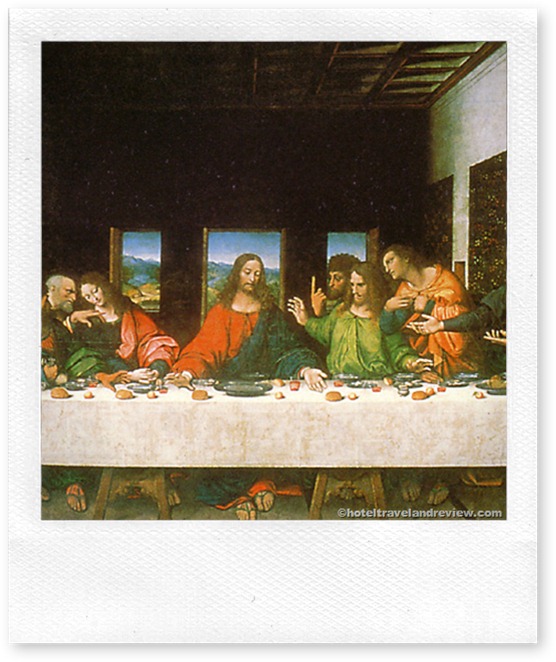Before leaving for Milan from Venice, might I add that do not expect large accommodation in Venice if you are trying to save. I stayed at San Giorgio and I love it due to its location and the owner’s hospitality however for Euro70 a night, you are going to get a small place.

Thus, if you want to save more and don’t mind the size of your rooms then Venice will make you happy.
From Venice, it is approximately 2 hours to Milan. (Below is a picture of me in front of Milan train station)

Milan is a busy and crowded and, truth be told, polluted city – not necessarily a place you would want to spend more than a couple of nights. Luckily, the main sights of Milan (yes, there are some) are easily covered in a day, so if you want to pause in this bustling metropolis you can do so.
The list of things to do in Milan may not be as long – or as famous – as the list of things to do in other Italian cities, but this isn’t just a destination for fashionistas and bankers. There are a few world-famous sights in Milan, several others worth your time if you have more than a day, and even more if you plan on making Milan a base for day trips.
Whether Milan ends up being a favorite Italian city or not, one thing you’ll certainly appreciate – regardless of how long or short your stay is – is how easy it is to get around in the city. If you limit yourself to the city center, you’ll find it amazingly compact and easy enough to walk around to many places. If you want to explore further or just want to give your feet a break, you’ll find Milan’s combination of subway, trams, and buses make it extremely simple to get anywhere you want to go.
Just take the hop on hop off buses which will be able to take you around the city of Milan in 2 hours – be warned though Milan is especially dusty and smoky.

Do visit the DUOMO if you can.
The best news for those who want to visit the Milan Duomo is that it’s free to enter. You’ll pay a fee if you want to enter the Treasury or Crypt (located inside the church) or access the Duomo roof (elevator and stair entrances located outside the church), but to just wander around the inside it’s absolutely free. There are entrances and exits at the front of the cathedral, and also along the right-hand side (if you’re looking at the front) – so if the line at the front is long, peek around the side to see if that door has less of a wait.
Why, you’re asking, are there lines if there’s no tickets to buy? Well, there are still police guarding the doors who have to make sure you’re dressed appropriately (no exposed shoulders or knees) and not bringing in food or drinks. There are also signs directing people to turn off cell phones and not take photographs or videos inside, but while I wandered around I think I was the only person not taking pictures. I even heard cell phones go off inside the church, and people chatting away on them. Now, I’m not religious, but I am respectful of other people’s beliefs, so please do me a favor and be respectful as well. This may be a tourist attraction to you, but it’s a place of worship to many. If you must take photographs (and it should be said the guards inside were doing nothing to stop people who were), whatever you do don’t take pictures of people praying or giving confession (I saw people taking pictures of both). The cathedral is an attraction, the people aren’t.
Ahem.One of the highlights of the interior of the church is a statue toward the back on the right-hand side, which depicts Saint Bartholomew. He was skinned alive, so is often shown in religious artwork as holding his own skin. In this case, he stands with his skin draped around him. The Flayed San Bartolomeo by artist Marco d’Agrate dates from 1562.
Other things worth noting inside the Duomo include:
- The massive paintings which hang seemingly in mid-air all over, between the various aisles, displayed during November and December
- Several sarcophagi of archbishops
- The church’s magnificent stained-glass windows, including the enormous choir windows
- Trivulzio Candelabra, a 12th-century gold piece in the transept of the church
- The Duomo is supposed to be in possession of one of the nails from the Crucifixion, which it keeps in the dome just beyond the spot over the altar and only lowers down into plain view once a year

The enormous painting adorns one wall of a former dining hall in the monastery attached to the Santa Maria delle Grazie church in Milan, and unfortunately da Vinci’s experimentation with a new kind of fresco application has led to the painting deteriorating dramatically over the years since it was completed. Because of this, visiting The Last Supper (Il Cenacolo in Italian) isn’t just as easy as showing up and popping in on a whim. Admission is strictly limited to a certain number of people per day, and visitors must go through several sealed chambers before entering the room where the painting is. In fact, the dining hall itself has been converted into a climate controlled environment, with the windows bricked up and the entire room sealed, simply to preserve what’s left of da Vinci’s work.
Groups of no more than 25 people are admitted into the dining hall every 15 minutes (when, of course, the previous group is ushered out). Tickets are sold in advance, and even if you’re not visiting during the busy tourist season you’ll need to book well ahead of time – the calendar can (and does) fill up quickly.
Personally, a few hours in Milan was enough for me. The next gem is in the next town.
Next : A 5 hour train ride to the “5 villages” aka Cinque Terre.

No comments:
Post a Comment